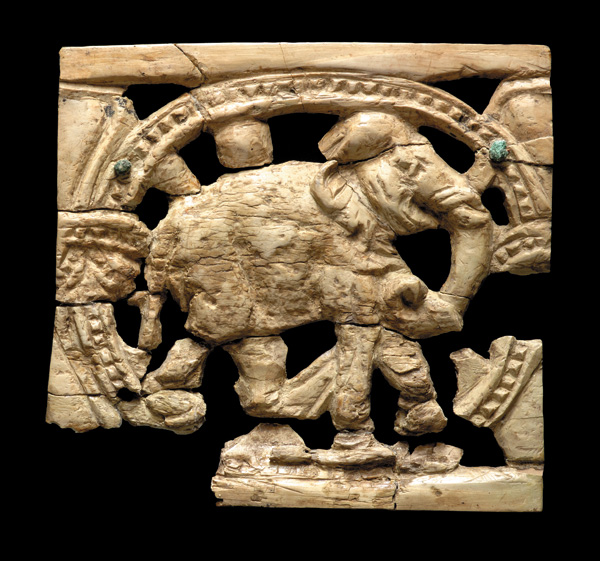
If you look closely at this 2.5-inch-tall, worn ivory, an exquisitely crafted depiction of an ambling Indian elephant enclosed by an intricately patterned roundel begins to emerge. While the elephant’s massive body has been worn and chiseled by time and its legs damaged and fragmented, its most distinguishing features remain clear, including its long, coiling trunk, billowy ears and pointed tusks. Punctuating the borders of the dotted roundel are the remnants of two copper pins that once held the plaque in place.
Dating to the late first or early second century C.E., this ivory was discovered along with a horde of others in the storerooms of an ancient palace at Bagram, a site in northern Afghanistan that served as the summer capital of the Kushan empire. At its height in the first century, the wealthy Kushan empire stretched from Afghanistan to India and prospered from its control of the region’s lucrative trade routes. The ivory panels and inlays, which were crafted in India, were used to decorate chairs, footstools and other pieces of royal furniture that adorned the Bagram palace.
Already a library member? Log in here.
Institution user? Log in with your IP address.

